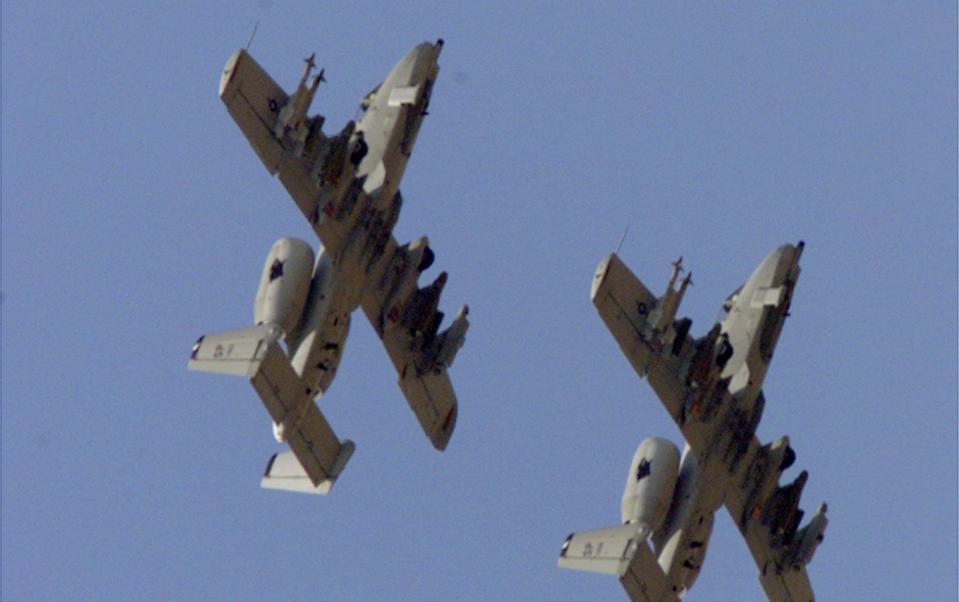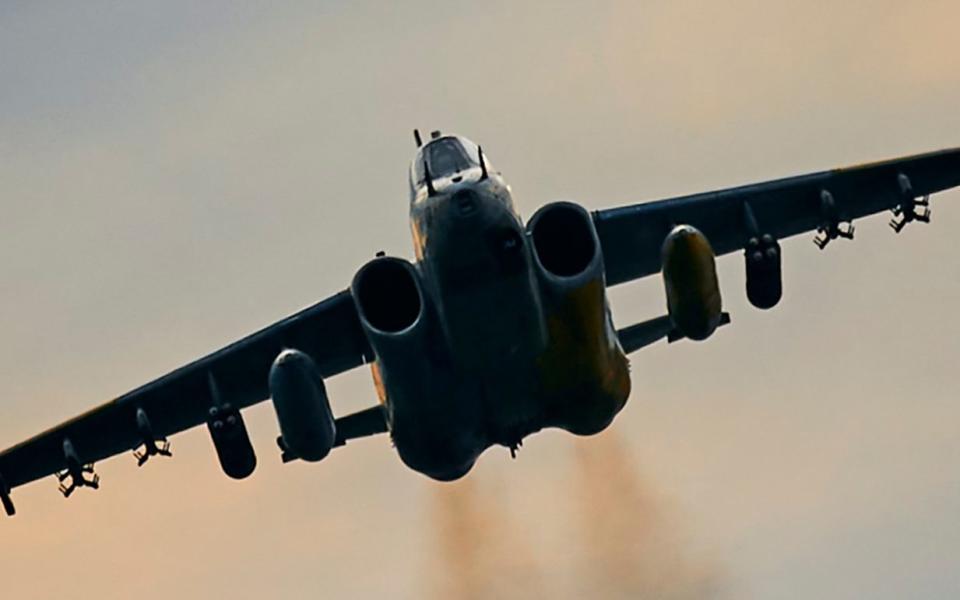America should unleash its armoured flying Hogs in Ukraine
- Oops!Something went wrong.Please try again later.
The commander of Ukrainian ground forces isn’t satisfied that his country is getting scores of surplus US-designed F-16 fighters. General Oleksandr Syrsky also wants ex-American A-10 attack jets.
The twin-engine, subsonic A-10 – manufactured in the 1970s and ‘80s and upgraded in the 2000s – is legendary in air-power circles. The armored A-10, nicknamed “Warthog” or just “Hog” by its pilots, is heavily armed with a tank-smasher 30-millimeter cannon and tons of missiles and bombs.

For nearly 50 years, the A-10 has been the US Air Force’s only dedicated close-air-support jet. That is, the only jet whose sole mission is to attack enemy troops in close proximity to friendly troops.
“This is not a new machine, but a reliable one that has proven itself in many wars, and which has a wide array of weapons for destroying land targets to help the infantry,” Syrsky has said of the A-10.
But it doesn’t look likely that Warthogs will make their way to Ukraine as Russia’s wider war on the country grinds toward its third year. While Syrsky makes a good case for Ukrainian A-10s, America’s dysfunctional politics would probably trump any military argument.
Ukraine will be lucky to get any US aid this year, never mind entire squadrons of specialised attack planes.
Early in the current wider war, a few former American officials advocated for a quick transfer of surplus A-10s to Ukraine. Of the more than 700 A-10s that Fairchild Republic built for the US Air Force, a little over 200 are still in service. Hundreds are in storage in Arizona.
The United States has sent Ukraine hundreds of vehicles, tens of helicopters and critical supplies of missiles and artillery shells. It has authorised other Nato countries to give Ukraine dozens of surplus F-16s – and is helping train Ukrainian pilots to fly the nimble, supersonic fighters.
But it didn’t offer any A-10s. At the time, one argument against Ukrainian A-10s was the extreme danger they would face – and the worrying prospect of dozens of American-made planes falling to the ground in flames without having done anything to help Ukraine’s war effort.
Russian air defenses are thick all along the 600-mile front line in Ukraine. These defenses have shot down more than 70 Ukrainian warplanes and around 40 helicopters, killing dozens of pilots and crew and reducing Ukraine’s pre-war air power by half.
The losses have included most of the roughly two dozen Sukhoi Su-25 attack jets the Ukrainian air force had before the wider war. The Su-25 was the Soviet Union’s answer to the A-10; Ukraine inherited some of the slow, heavily-armed attack jets when the Soviet Union collapsed in 1991.
But heavy losses haven’t grounded the Su-25s. The Ukrainian air force rebuilt its depleted Su-25 brigades with old jets they pulled from storage and others they got from Nato countries who had acquired them in the past as Warsaw Pact members. Pilots started flying low – as in, just above the treetops – to dodge Russian fire. And rather than flying directly over the front line, they usually nose up and lob rockets at Russian positions from miles away.

If Ukraine did get A-10s, it would probably deploy them the same way, but with the wider array of modern munitions the A-10 can carry. The Warthog’s 30mm gun might not get the chance to rip up many Russian vehicles, though it’s worth noting that the ’Hog is much more heavily armoured than most aircraft, with 1200 pounds of titanium protection. Yes, there would be losses. No, those losses wouldn’t be a pointless waste of people and machines.
Warthogs would definitely be a good and useful thing to send.
But the point is moot, now. Nearly two years later, the United States can’t give Ukraine A-10s … or any other weapon that requires expensive training and support. US funding for Ukraine ran out in late December. And while US president Joe Biden has proposed $61 billion in additional funding, pro-Russia Republicans in the US House of Representatives have refused to vote on the proposal.
All that is to say, Ukraine can’t get anything from the United States right now – barring, of course, some truly creative legal and bureaucratic moves by Biden. No ammunition. No vehicles. Certainly no heavily-armed attack jets.
If and when the Republican extremists concede and belatedly approve further aid, there will be much higher priorities than any A-10s. Most urgently, Ukraine will need artillery shells and small drones. Lots of them – and fast.
Ukraine can survive without Warthog attack jets. It can’t survive without shells and drones.

